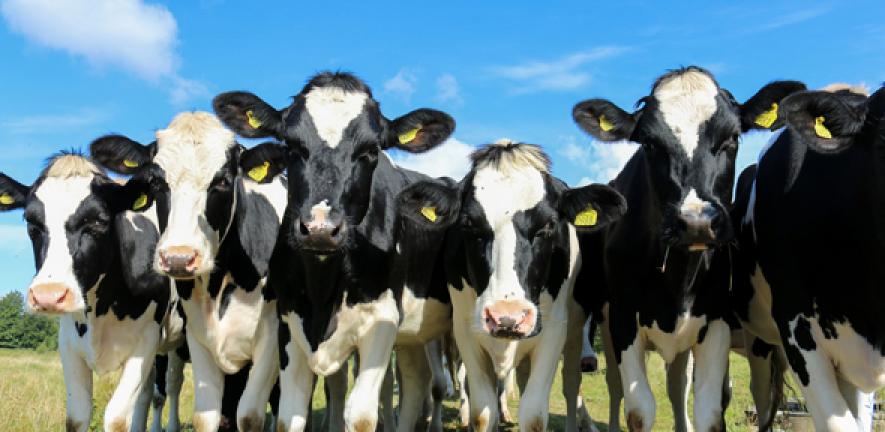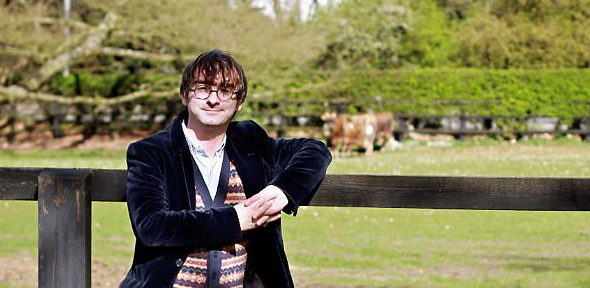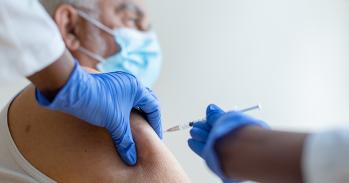
Field trials for a vaccine to protect cattle against bovine tuberculosis (bovine TB) would need to involve 500 herds – potentially as many as 75,000-100,000 cattle – to demonstrate cost effectiveness for farmers, concludes a study published today in the journal eLife.
Field trials for a vaccine to protect cattle against bovine tuberculosis (bovine TB) would need to involve 500 herds – potentially as many as 75,000-100,000 cattle – to demonstrate cost effectiveness for farmers, concludes a study published today in the journal eLife.
Our results highlight the enormous scale of trials that would be necessary to evaluate BCG alongside continuing testing in the field. Such trials would be hugely expensive, and it isn’t even clear whether enough farms could be recruited
Andrew Conlan
Instead, the researchers suggest that the scale and cost of estimating the effect of a vaccine on transmission could be dramatically reduced by using smaller, less expensive experiments in controlled settings – using as few as 200 animals.
Bovine TB is an infectious disease that affects livestock and wildlife in many parts of the world. In the UK, it is largely spread between infected cattle; badgers are also involved, transmitting to and receiving infection from cattle. Culls to keep badger populations small and reduce the likelihood of infecting cattle have proven controversial both with the public and among scientists.
The UK has a policy of ‘test and slaughter’ using the tuberculin test and slaughter of infected animals. A vaccine (BCG) exists, but can cause some vaccinated cattle to test positive falsely. As such, the vaccine is currently illegal in Europe. Researchers are trying to develop a so-called ‘DIVA test’ (‘Differentiates Infected from Vaccinated Animals’) that minimises the number of false positives, but none are yet licensed for use in the UK.
The European Union has said it would consider relaxing its laws against bovine TB vaccination if the UK government were able to prove that a vaccine is effective on farms. Any field trials would need to follow requirements set by the European Food Safety Authority (EFSA).
In research published today, a team of researchers led by the University of Cambridge has shown using mathematical modelling that satisfying two key EFSA requirements would have profound implications for the likely benefits and necessary scale of any field trials.
The first of these requirements is that vaccination must be used only as a supplement, rather than replacement, to the existing test-and-slaughter policy. But use of vaccination as a supplement means that a successful vaccine which reduces the overall burden and transmission of disease may nonetheless provide only limited benefit for farmers – false positives could still result in animals being slaughtered and restrictions being placed on a farm.
The second of the EFSA requirements is that field trials must demonstrate the impact of vaccination on transmission rather than just protecting individual animals.
The team’s models suggest that a three year trial with 100 herds should provide sufficient to demonstrate that vaccination protects individual cattle. Such a trial would be viable within the UK. However, demonstrating the impact on vaccination on transmission would be almost impossible because the spread of bovine TB in the UK is slow and unpredictable.
If BCG were to be licensed for use in cattle in the UK, vaccination would be at the discretion of individual farmers. Farmers would have to bear the costs of vaccination and testing, as well as the period of time under restrictions if animals test positive. This means that they would be less interested in the benefit to individual cattle and more interested in the benefits at the herd level. Herd immunity is such that, even if the vaccine is not 100% effective in every individual animal, the vaccine has an overall protective effect on the herd.
Trying to demonstrate an economic benefit for farmers would prove challenging. Using their models, the researchers show that herd-level effectiveness would be exceptionally difficult to estimate from partially-vaccinated herds, requiring a sample size in excess of 2,000 herds. The number of herds required could be reduced by a ‘three arm design’ that includes fully-vaccinated, partially-vaccinated and unvaccinated control herds; however, such a design would still require around 500 fully-vaccinated herds and controls – presenting potential logistical and financial barriers – yet would still have a high risk of failure.
Instead, the researchers propose a natural transmission experiment involving housing a mixture of vaccinated and unvaccinated cattle with a number of infected cattle. Such an experiment, they argue, could provide robust evaluation of both the efficacy and mode of action of vaccination using as few as 200 animals. This would help screen any prospective vaccines before larger, more expensive and otherwise riskier trials in the field.
“We already know that the BCG vaccine has the potential to protect cattle from bovine TB infection,” says Dr Andrew Conlan from the Department of Veterinary Medicine at the University of Cambridge, the study’s first author. “Our results highlight the enormous scale of trials that would be necessary to evaluate BCG alongside continuing testing in the field.
“Such trials would be hugely expensive, and it isn’t even clear whether enough farms could be recruited. This scale could be dramatically reduced by using smaller scale natural transmission studies.”
Based on current knowledge of the likely efficacy of BCG, the researchers say their models do not predict a substantial benefit of vaccination at the herd level when used as a supplement to ongoing test-and-slaughter. Ruling out the use of vaccination as a replacement, rather than a supplement, to test-and-slaughter will inevitably limit the effectiveness and perceived benefits for farmers.
“If we could consider replacing test-and-slaughter with vaccination, then the economics becomes much more attractive, particularly those in lower income countries,” says Professor James Wood, Head of Cambridge’s Department of Veterinary Medicine. “Then, we would no longer need to carry out expensive testing, but could instead rely on passive surveillance through the slaughterhouses.”
The study was funded by the UK Department for Environment, Food and Rural Affairs (Defra) and the Alborada Trust
Reference
Conlan, AJK, et al. The intractable challenge of evaluating cattle vaccination as a control for bovine Tuberculosis. eLife; 5 June 2018; DOI: 10.7554/eLife.27694.001
Researcher Profile: Dr Andrew Conlan

It may seem surprising to find a physicist in the Department of Veterinary Medicine, but this was how Dr Andrew Conlan began his career at the University of Edinburgh. He is now an applied mathematician and statistician at in Cambridge’s Disease Dynamics Unit, engaged in work which he describes as “intensively multi-disciplinary”, requiring him to work within multiple environments with medics, veterinarians, farmers, policymakers – and even school children.
Andrew’s research sets out to use mathematics to predict the spread of infectious disease within populations and provide evidence to inform policy on the control of infectious diseases in humans and animals. His work centres around controlling the spread of diseases such as bovine TB and human diseases including, measles, whooping cough, scarlet fever, norovirus and meningitis.
“Policy decisions on the control of infectious diseases often have to be made quickly based on limited information and data,” he says. “I believe that government policy on infectious disease control should be based on evidence and good science.”
Although much of his research is office-based, involving analysing data, writing computational models and occasionally pen-and-paper work, he also does a lot of work with schools, working with pupils on research projects and delivering lessons on disease transmission.
“I’ve been involved in running citizen science projects for many years now, which have led to several peer reviewed papers on how social contact networks in schools could be useful to predict the spread of infectious disease,” he explains (while, ironically, nursing a cold picked up from his son, who had in turn picked it up at nursery). “I dreamed it up over a tea break with my colleague Ken Eames. At the time very little work had been down on contact patterns in school age children as they are a potentially vulnerable population that is difficult to access. We thought that getting them to do the research themselves and take ownership would be a way to address it – and it worked!”

The text in this work is licensed under a Creative Commons Attribution 4.0 International License. Images, including our videos, are Copyright ©University of Cambridge and licensors/contributors as identified. All rights reserved. We make our image and video content available in a number of ways – as here, on our main website under its Terms and conditions, and on a range of channels including social media that permit your use and sharing of our content under their respective Terms.




